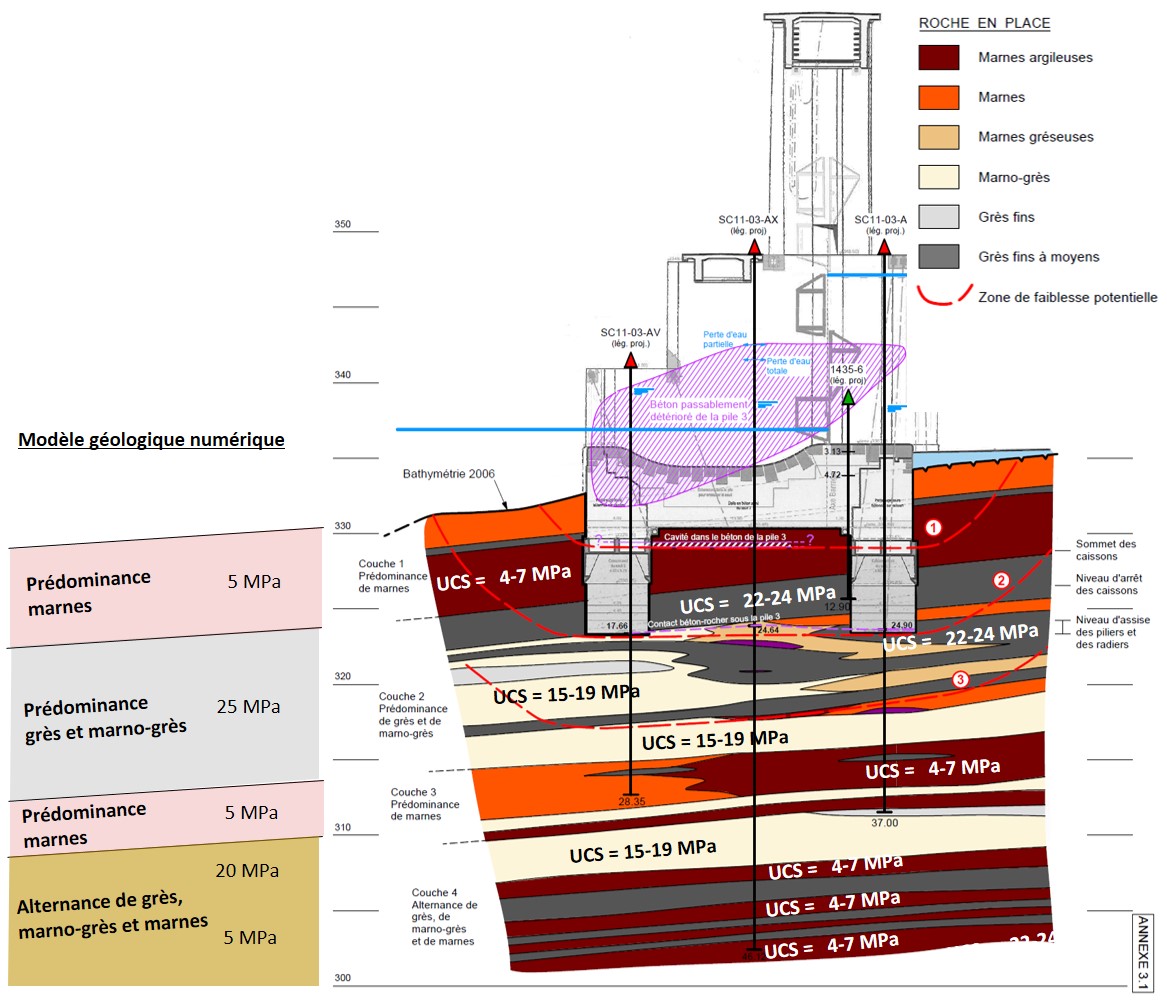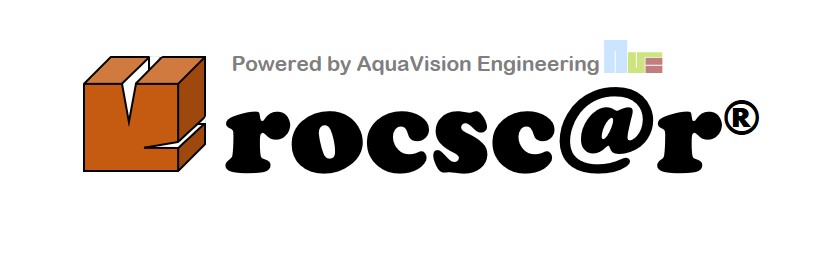
Choose your favorite 2D vertical profiles…
Set-up the main geometry of the spillway, the plunge pool and the downstream rock mass within pre-defined 2D vertical profiles in the X-Z plane:
- set-up min. and max. coordinate extensions in X and Z, such that all elements are covered
- determine a series of 2D vertical profiles for the scour computations
The scour computations are performed within 2D geometrical profiles that have local coordinates in the X-Z plane, i.e. vertically oriented plane profiles that contain the dam and spillway geometry as well as part of the downstream rock mass under the form of a longitudinal section, from upstream to downstream.
The image on the left illustrates examples of 2D vertical profiles that have been determined in a 3D geometrical situation of an arch dam and its downstream plunge pool. The profiles can be oriented freely, for example following the river axis (profile 1), or following the dam and spillway concentric curvature and geometry (profile 2).
…and within each 2D vertical profile…
Set-up the geometry of the spillway, the plunge pool and the downstream rock mass within pre-defined 2D vertical profiles in the X-Z plane:
- use of local coordinates: for the Z-axis, the most convenient way is to adopt Z-altitudes following the formal (national) coordinate system. For the X-axis, local coordinates should be used, however. The origin of the X-axis can be freely chosen.
- determination of numerical grid points: interdistance along both X and Z-axes, defining the numerical grid used during the computations
- determination of water-rock interface by specific interface (see image on the right)
- determination of rock mass layers with depth (see image below)


…define your rock mass with depth
Based on a series of pre-defined rock mass layers/lithologies and their geomechanical characteristics, determine your 2D rock mass structure with depth over the entire computational domain.
